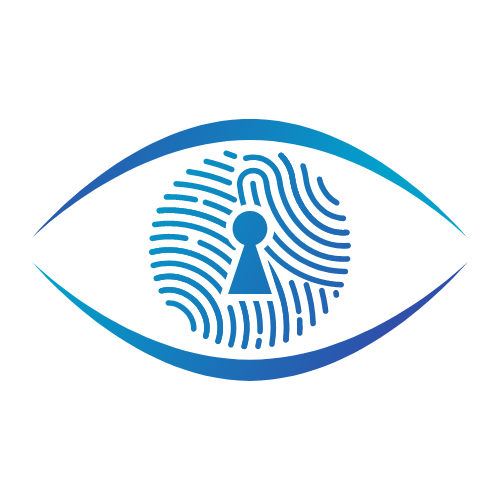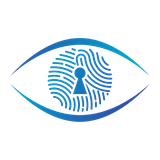Estonia's Digital Revolution: A Blueprint for Modern Compliance

Estonia, a nation often lauded as the world's most digitally advanced society, offers a compelling case study for organizations navigating the complexities of modern compliance. From its foundational "Tiger Leap" initiative in 1996 to its current status as a "cyber-conscious" state, Estonia's journey highlights how a comprehensive, digital-first approach to governance and business can foster efficiency, transparency, and robust security. For compliance professionals, understanding Estonia's model provides invaluable insights into leveraging technology, managing digital identity, and building resilient cybersecurity frameworks.
The Foundation of a Digital Society
Estonia's digital transformation began with a bold vision and a necessity to innovate, leading to the "Tiger Leap" initiative that ensured internet access and computers in every school by 2001. This early investment in digital education shaped a digitally literate society and laid the groundwork for "e-Estonia," a digital society that facilitates citizens' and residents' interactions with the state through advanced ICT solutions. Today, 99% of Estonian public services are available digitally, including e-Tax Board, e-Business, e-Banking, e-healthcare, and e-voting.
The X-Road data exchange platform serves as the "backbone" of Estonia's interoperable digital state. This open-source solution allows hundreds of independent public and private sector databases to exchange data securely and scalably, eliminating redundant paperwork, providing instant access to reliable information, and enabling public employees to focus on tasks requiring human judgment. While some have mistakenly associated X-Road with blockchain or distributed ledger technology (DLT), its core functionality does not rely on these, though future studies might explore their potential benefits for managing configuration details and organizational identities.
The benefits of this digital-first approach are tangible: it takes under 3 hours to start a company, e-taxation is paperless and simple, and the country boasts a reputation as a "Start-Up Nation" with a high number of unicorns per capita. This systemic digitalization reduces bureaucracy, saves time and money, and empowers entrepreneurs to focus on value creation.
Cybersecurity: A Core Value and Strategic Priority
Estonia's robust cybersecurity posture was born out of experience, particularly the 2007 cyberattacks which involved many people of varying skill levels, externally motivated attackers, and some form of state support. These attacks, ranging from manual pings to botnet DDoS attacks, demonstrated the critical need for a comprehensive national cybersecurity approach.
The current Cybersecurity Strategy 2024–2030, titled ‘Cyber-conscious Estonia,’ aims to strengthen security and safety comprehensively. Key aspects of this strategy include:
- Comprehensive Prevention: Ensuring Estonian society is cyber-aware, with individuals, businesses, and public sector employees possessing the necessary knowledge to deal with threats and prevent incidents. This involves targeted campaigns and annual cybersecurity tests.
- Information Security Standards: Implementing and annually updating the Estonian Information Security Standard (E-ITS), which is compliant with ISO/IEC 27001 and tailored to Estonian conditions. This standard helps organizations gain a comprehensive overview of their cybersecurity situation and risks.
- Secure Basic Architecture: Reducing dependence on legacy systems, systematically reducing digital waste, and implementing "security by design" principles throughout the lifecycle of digital services. This also includes a gradual move towards IPv6 adoption and zero-trust security principles.
- Enhancing Crisis Resilience: Developing a streamlined crisis management model and implementing a unique cybersecurity reserve system, which involves competent experts from both public and private sectors to respond to major incidents.
- Community and Succession: Fostering a diverse and open cybersecurity community, acknowledging that automation alone cannot ensure cybersecurity. This includes supporting educational initiatives at all levels to develop future cybersecurity professionals and integrating cyber hygiene into curricula.
The Information System Authority (RIA) is central to Estonia's cybersecurity efforts, responsible for analyzing cyber threats, informing government agencies and the public, and managing the cybersecurity reserve. Cooperation with international partners like the EU, NATO, and the UN is also a priority to deter cyberattacks and enhance collective security.
Digital Identity: The Cornerstone of Trust and Verification
Estonia's blockchain-based digital identity system (eID) is a globally recognized innovation. It provides citizens and residents with a secure, government-issued digital ID card, enabling digital signing of documents, remote business management, and access to a wide range of public and private e-services. This digital ID enhances compliance by facilitating transparent and verifiable online operations.
Recent advancements include a new digital government app by RIA that allows for ID verification equivalent to a biometric passport or national ID card, streamlining everyday use and service access. The future of identity verification is moving towards AI-driven biometrics and data crosslinking, offering a more secure and harder-to-duplicate alternative for online transactions and fraud prevention. This shift emphasizes continuous "know-your-customer" (KYC) verification, providing multiple avenues for real-time, effective identification.
For compliance, Estonia's digital identity system means:
- Enhanced Document Authenticity: The ability to digitally sign and verify the authenticity of signed documents.
- Secure Transactions: Encrypting and sending documents securely, reducing risks associated with traditional paper-based processes.
- Fraud Prevention: AI-driven biometrics and data crosslinking offer stronger protection against digital identity theft and fraud, which are growing concerns.
E-Residency: Extending Digital Compliance Globally
Estonia's e-Residency program allows entrepreneurs, freelancers, digital nomads, and global business owners to start and manage a company entirely online from anywhere in the world. It provides access to the EU business environment, offering a stable, digital-first base for scaling businesses.
The e-Residency community, comprising over 100,000 e-residents from 179 countries, is a key selling point. This community offers networking opportunities, access to knowledge and experience from like-minded entrepreneurs, and avenues to find clients and business partners.
From a compliance perspective, e-Residency offers:
- Ease of Business Administration: Low bureaucracy thanks to advanced e-Governance services, allowing most administrative activities to be done online without needing to travel to Estonia.
- Online Tax Declaration: Ability to declare Estonian corporate taxes online if the company is an Estonian tax resident.
- EU Business Environment Access: Provides a compliant gateway to operate within the European market.
- Transparent Environment: Operates within a transparent, EU-based business environment.
It is important to note that e-Residency does not grant permission to travel to or live in Estonia or the EU, nor does it affect current residency, citizenship, or visas. It also does not automatically come with a physical address in Estonia or guarantee access to a bank account, which requires a separate application.
Key Lessons for Global Compliance
Estonia's digital journey offers several critical takeaways for organizations and governments looking to enhance their compliance frameworks:
- Holistic Integration of Digitalization and Security: Digital transformation must be inherently linked with robust cybersecurity measures from the outset, rather than as an afterthought.
- Community-Driven Resilience: Engaging a broad community of experts, including public, private, and volunteer sectors, significantly enhances national cyber defense capabilities and fosters trust for effective cooperation during incidents.
- Proactive Legal Frameworks: Continuously updating legislation and standards (like E-ITS) to address evolving threats and new technologies (e.g., AI, quantum computing) ensures a flexible and proportional regulatory environment.
- Emphasis on Digital Literacy and Education: Investing in education across all age groups, from basic cyber hygiene to advanced cybersecurity skills, is crucial for building a cyber-conscious society and addressing specialist shortages.
- User-Centric Design: Focusing on solutions that are easy to use and practical for everyday activities encourages widespread adoption and enhances overall security.
- Transparency and Trust: Maintaining clear and honest principles, upholding data ownership, and ensuring confidentiality, availability, and integrity are paramount for public and business confidence in digital services.
Estonia's commitment to continuous innovation, coupled with a strong emphasis on security and community, positions it as a leading model for developing resilient, transparent, and compliant digital ecosystems globally.





